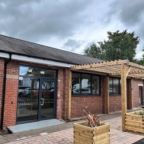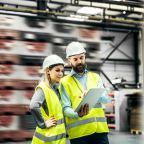
How Technology Is Helping Farmers Deal With Real-World Problems
Scouting by foot to see if there’s any problem in the field used to work. The fields were smaller, seasons more predictable, and input costs lower back then. But today, people can’t cover enough ground fast enough to catch the early warning signs. And by the time they do, the weeds have taken root, or the pests have spread past the point of cheap control.
Working with a trusted agriculture software company for remote field monitoring means seeing those warning signs before they show up in yield. Instead of walking all 300 hectares, farmers can focus on the 20 that actually need checking. And when inputs cost what they do today, knowing where not to act is just as important as knowing where to step in.
The Biggest Problems Modern Farmers Face
For all the talk about “feeding the world,” farming remains deeply vulnerable. Despite powerful fertilizers and pesticides, yields still depend on slowly degrading soils. Climate change gets the headlines, but its real impacts on farming rarely get that much attention. Many challenges, including bad weather, pest outbreaks, and rising costs, repeat each season. And more often than not, it’s several things going wrong at once.
Among the biggest agricultural problems are the following:
- Extreme weather, in the US alone, caused over $20.3 billion in crop and rangeland losses in just one year, according to the American Farm Bureau. Events like droughts, floods, hailstorms, and high winds are hitting more often and causing more damage;
- Pest pressure is rising as insects adapt to chemical controls and climate change expands their range. A single unchecked infestation of fall armyworm, for example, can destroy 50% of a maize crop;
- Crop diseases destroy enough food to feed millions of people annually. Fungal infections such as Fusarium and powdery mildew are intensifying due to rising humidity, especially in temperate zones, pushing farmers to spend more on fungicides and resistant seed varieties;
- Soil degradation due to overcropping, erosion, or salinization reduces yield potential and increases fertilizer dependence, especially in dryland areas;
- Spikes in fertilizer or fuel prices (like the global surge in 2022) can delay/disrupt critical field operations and make entire crop production plans unprofitable, even with good yields;
- Contamination and pollution from fertilizer overapplication, pesticide drift, or leaking fuel tanks can ruin a season’s yield and bring heavy fines if neighboring properties or water supplies are affected;
- Water shortages are becoming more common as groundwater levels are dropping in many regions. Without affordable irrigation, farmers often delay or reduce planting and eventually get lower yields;
The real challenge is that the risks can overlap, trigger one another, and strike when least expected. So, they all demand at least attention, or, what’s better, mitigation and control, because assuming “it’ll be fine next season” is not safe.
How Technology Helps Farmers Tackle Their Biggest Problems
While tough seasons aren’t going away on their own, there are different agricultural technologies that can make problems more controllable. With digital farming solutions, field decisions are backed by both historical and daily (or even hourly) accurate, area-specific readings from above and below the ground. The most helpful agricultural technologies to solve the abovementioned problems are:
- Satellite imagery and remote sensing. Modern satellites monitor crop health, moisture levels, and even subtle signs of stress every few days. Vegetation indices (like NDVI or NDRE) show where growth is lagging so farmers can prioritize inspections and treatments. With satellite-based crop management software, a farmer can check only problematic areas instead of scouting 100 hectares, thus saving fuel, time, and input costs.
- Drones with multispectral sensors. Drones fly low over fields, spotting insect patterns, water stress, or nutrient gaps. Farmers can use drone maps, which show row-level nuances, to pinpoint replanting, spraying, or watering in smaller areas.
- IoT (Internet of Things) soil sensors. Placed at different depths, these sensors track moisture, salinity, and temperature. When linked to automated irrigation, they can cut water use by 25–25%, especially in sandy soils or under drip lines.
- VRA (variable-rate application) systems. By combining satellite maps and soil data, VRA spreads fertilizer, seed, or pesticides only where needed. This means fewer overlaps, no burnt patches, and better use of inputs.
- Farm monitoring platforms. These platforms (e.g., EOSDA Crop Monitoring) gather satellite imagery, farm machinery data, weather, and field sensor readings in one place. Digital farming systems also analyze data using built-in models to provide farmers with tailored recommendations.
- The right combination of these and other agriculture software solutions and tools gives farmers time to prevent or at least react and avoid turning a local problem into a whole bad season.
What Farming Could Look Like In The Next 10 Years
An average farmer in 2035 won’t start the day by walking the fields. Instead, they’ll check an agriculture software dashboard that already knows which plots are too dry, where the pests start feeding, and whether extra foliar fertilizing is needed. Most of that data will come from satellite imagery, IoT sensors, and weather stations and then be processed by AI-guided models working behind the scenes.
Spraying won’t mean sending a tractor across the whole field. A drone or robotic sprayer will follow GPS maps and apply only where needed. Every drop of water, fertilizer, or fuel will be tracked and optimized.
Inside city boundaries, vertical farms will grow lettuce, herbs, or strawberries under LED lights, stacked floor to ceiling. These farms will protect farmers against droughts, pests, and price swings caused by distant supply chains.
Some of this already exists. What’s changing is how accessible it becomes. Of course, cost, training, and infrastructure gaps still slow progress. However, as more governments and companies invest in access, precision agriculture software and equipment will become part of how farming works everywhere and for everyone.
Author: Vasyl Cherlinka
Vasyl Cherlinka is a Doctor of Biosciences specializing in pedology (soil science), with 30 years of experience in the field. With a degree in agrochemistry, agronomy and soil science, Dr. Cherlinka has been advising on these issues private sector for many years.











